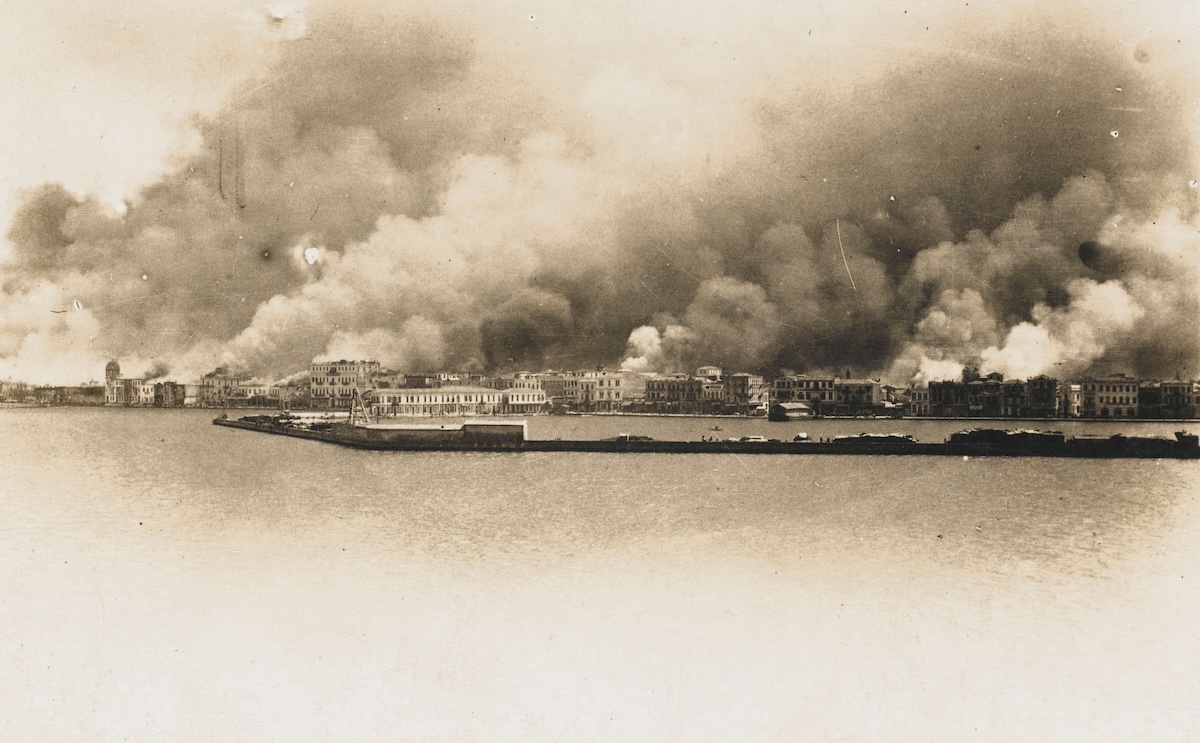The Great Fire of Smyrna
As the Ottoman Empire crumbled, the Greek and Armenian quarters of Smyrna were set ablaze on 13 September 1922 by the vengeful Turkish army.

It was, Strabo said, ‘the finest city in Asia’. But ruin was in Smyrna’s bones. It was destroyed by Lydia and Persia, and later by the Seljuks and the army of Timur. In the Book of Revelation it is one of Asia’s seven churches – known for its tribulations, St John said.
To the Ottomans, who took it in the 15th century, it was ‘infidel Smyrna’, the last Christian majority city in Asia. There were thousands of Armenian and Levantine Christians, and tens of thousands of Greeks. The city was Greek before it was Christian; it may be the birthplace of Homer.
Greece seized Smyrna in 1919 as the Ottoman Empire collapsed. The Turks took it back on 9 September 1922. Four days later the Turkish army set fire to Smyrna’s Greek and Armenian quarters. ‘Turkish quarter intact: 180,000 persons homeless’ was the Telegraph headline. The real number of refugees from the inferno is unknown. Is it true that close to half a million gathered on the quayside? British, American and Greek ships rescued some 250,000. Perhaps 100,000 more died. Some sources say the Turks marched another 100,000 out of the city and into oblivion.
Smyrna is called Izmir now: a bigger city, but somehow smaller all the same.






